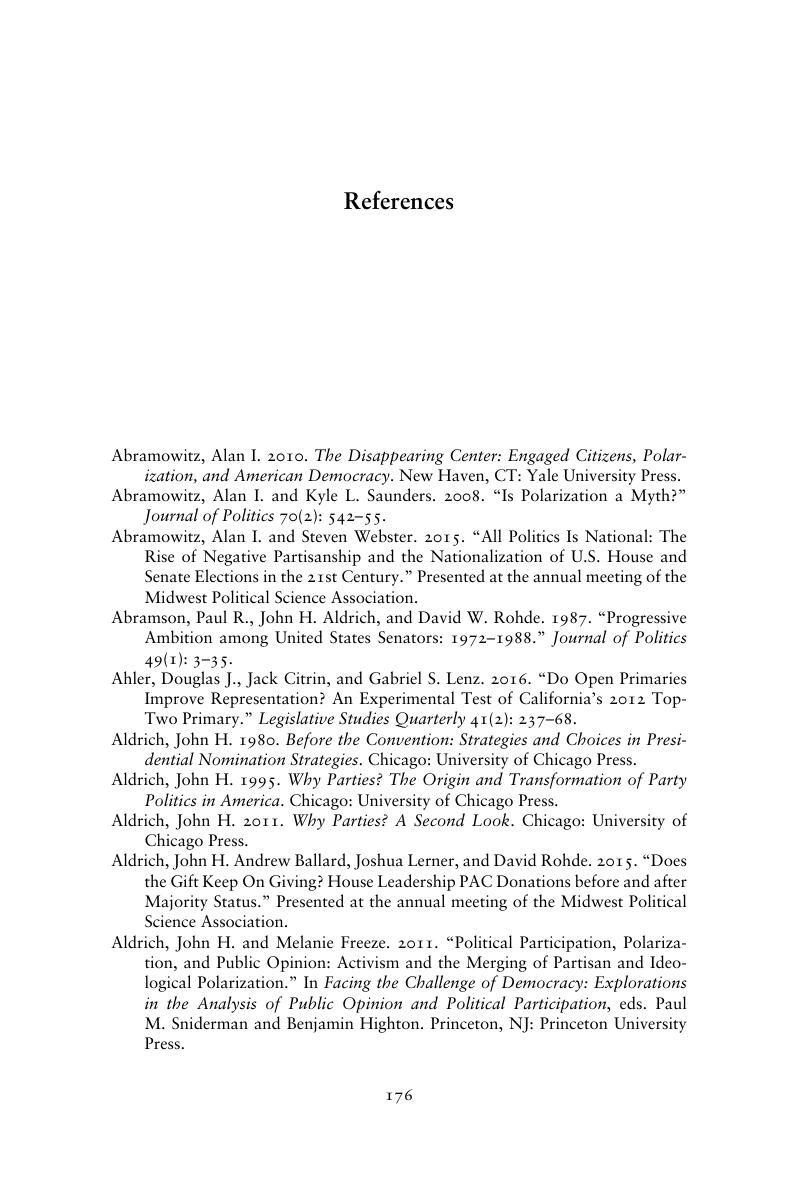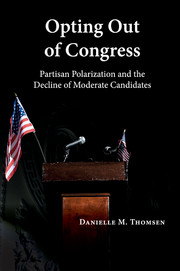Book contents
- Opting Out of Congress
- Opting Out of Congress
- Copyright page
- Contents
- Figures
- Tables
- Acknowledgments
- Introduction
- 1 The Choices Have Changed
- 2 Party Fit and the Calculus of Candidacy
- 3 Ideology, Attitudes, and Political Ambition
- 4 Ideological Moderates Won't Run for Congress
- 5 Where the Action Is
- 6 Ideological Moderates Won't Stay in Congress
- 7 The Growing Partisan Gap in Women's Representation
- 8 Toward a Less Polarized Congress?
- Book part
- References
- Index
- References
References
Published online by Cambridge University Press: 19 May 2017
- Opting Out of Congress
- Opting Out of Congress
- Copyright page
- Contents
- Figures
- Tables
- Acknowledgments
- Introduction
- 1 The Choices Have Changed
- 2 Party Fit and the Calculus of Candidacy
- 3 Ideology, Attitudes, and Political Ambition
- 4 Ideological Moderates Won't Run for Congress
- 5 Where the Action Is
- 6 Ideological Moderates Won't Stay in Congress
- 7 The Growing Partisan Gap in Women's Representation
- 8 Toward a Less Polarized Congress?
- Book part
- References
- Index
- References
Summary

- Type
- Chapter
- Information
- Opting Out of CongressPartisan Polarization and the Decline of Moderate Candidates, pp. 176 - 191Publisher: Cambridge University PressPrint publication year: 2017



